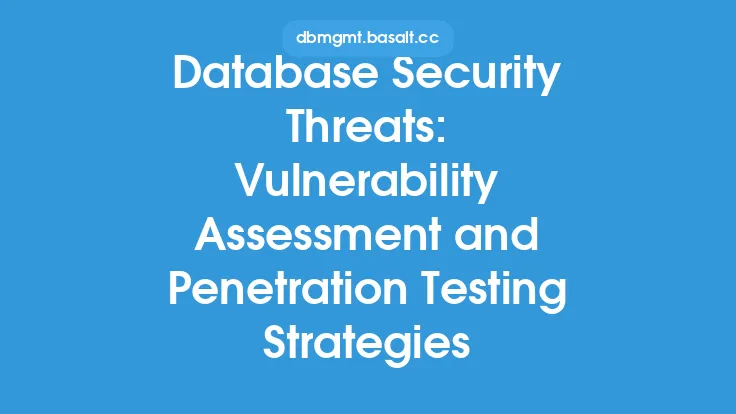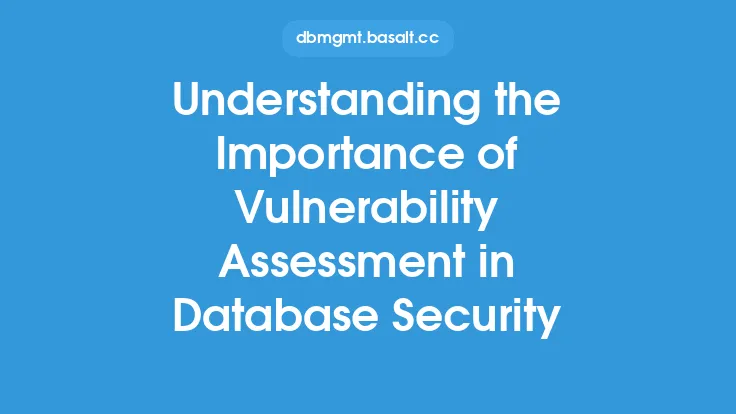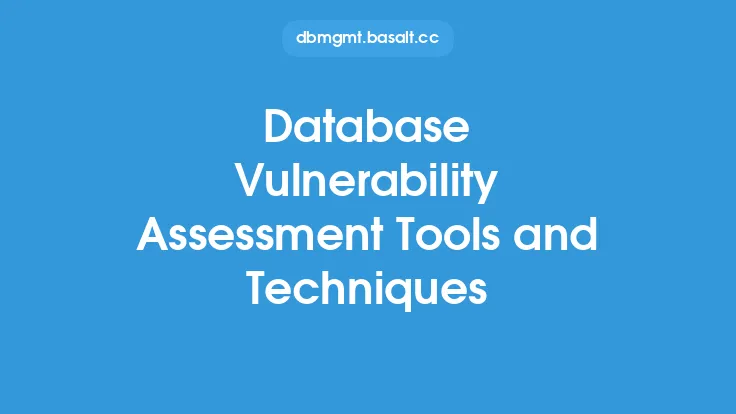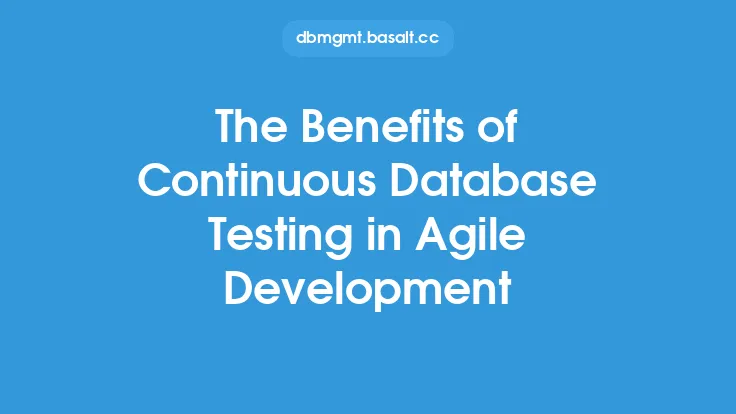Regular database penetration testing and vulnerability assessment are essential components of a comprehensive database security strategy. These processes help identify and remediate potential security vulnerabilities, ensuring the confidentiality, integrity, and availability of sensitive data. By conducting regular penetration testing and vulnerability assessments, organizations can proactively protect their databases from cyber threats, reduce the risk of data breaches, and maintain compliance with regulatory requirements.
Introduction to Database Penetration Testing
Database penetration testing, also known as pen testing or ethical hacking, is a simulated cyber attack against a database to test its defenses and identify vulnerabilities. This process involves attempting to bypass security controls, inject malicious code, and exploit weaknesses to gain unauthorized access to sensitive data. The goal of penetration testing is to identify potential entry points that an attacker could use to compromise the database, and to provide recommendations for remediation and mitigation.
Benefits of Regular Vulnerability Assessment
Regular vulnerability assessment is a critical component of database security, as it helps identify potential weaknesses and vulnerabilities in the database and its associated systems. Vulnerability assessment involves scanning the database and its environment to identify potential vulnerabilities, such as outdated software, misconfigured settings, and weak passwords. By conducting regular vulnerability assessments, organizations can identify and prioritize potential vulnerabilities, and take proactive steps to remediate them before they can be exploited by attackers.
Identifying Common Database Vulnerabilities
Common database vulnerabilities include SQL injection, cross-site scripting (XSS), and buffer overflow attacks. SQL injection attacks involve injecting malicious code into database queries to extract or modify sensitive data. XSS attacks involve injecting malicious code into web applications to steal user credentials or take control of user sessions. Buffer overflow attacks involve overflowing a buffer with malicious code to execute arbitrary commands or take control of the database. Regular penetration testing and vulnerability assessment can help identify these vulnerabilities and provide recommendations for remediation and mitigation.
Best Practices for Database Penetration Testing and Vulnerability Assessment
To get the most out of database penetration testing and vulnerability assessment, organizations should follow best practices such as conducting regular testing and assessment, using automated tools and techniques, and engaging experienced and certified testers. Regular testing and assessment help ensure that the database and its environment are continuously monitored for potential vulnerabilities, and that remediation and mitigation efforts are proactive and effective. Automated tools and techniques can help streamline the testing and assessment process, and provide more comprehensive and accurate results. Engaging experienced and certified testers ensures that the testing and assessment process is conducted by knowledgeable and skilled professionals who understand the complexities of database security.
The Importance of Continuous Monitoring and Remediation
Continuous monitoring and remediation are critical components of a comprehensive database security strategy. Continuous monitoring involves regularly scanning the database and its environment to identify potential vulnerabilities and weaknesses, and providing real-time alerts and notifications to security teams. Remediation involves taking proactive steps to fix identified vulnerabilities and weaknesses, such as applying patches, updating software, and reconfiguring settings. By continuously monitoring and remediating potential vulnerabilities, organizations can reduce the risk of data breaches, maintain compliance with regulatory requirements, and ensure the confidentiality, integrity, and availability of sensitive data.
Conclusion
In conclusion, regular database penetration testing and vulnerability assessment are essential components of a comprehensive database security strategy. By conducting regular penetration testing and vulnerability assessments, organizations can proactively protect their databases from cyber threats, reduce the risk of data breaches, and maintain compliance with regulatory requirements. By following best practices such as conducting regular testing and assessment, using automated tools and techniques, and engaging experienced and certified testers, organizations can ensure that their databases are secure, reliable, and compliant. Continuous monitoring and remediation are also critical components of a comprehensive database security strategy, as they help identify and fix potential vulnerabilities and weaknesses in real-time, and ensure the confidentiality, integrity, and availability of sensitive data.





